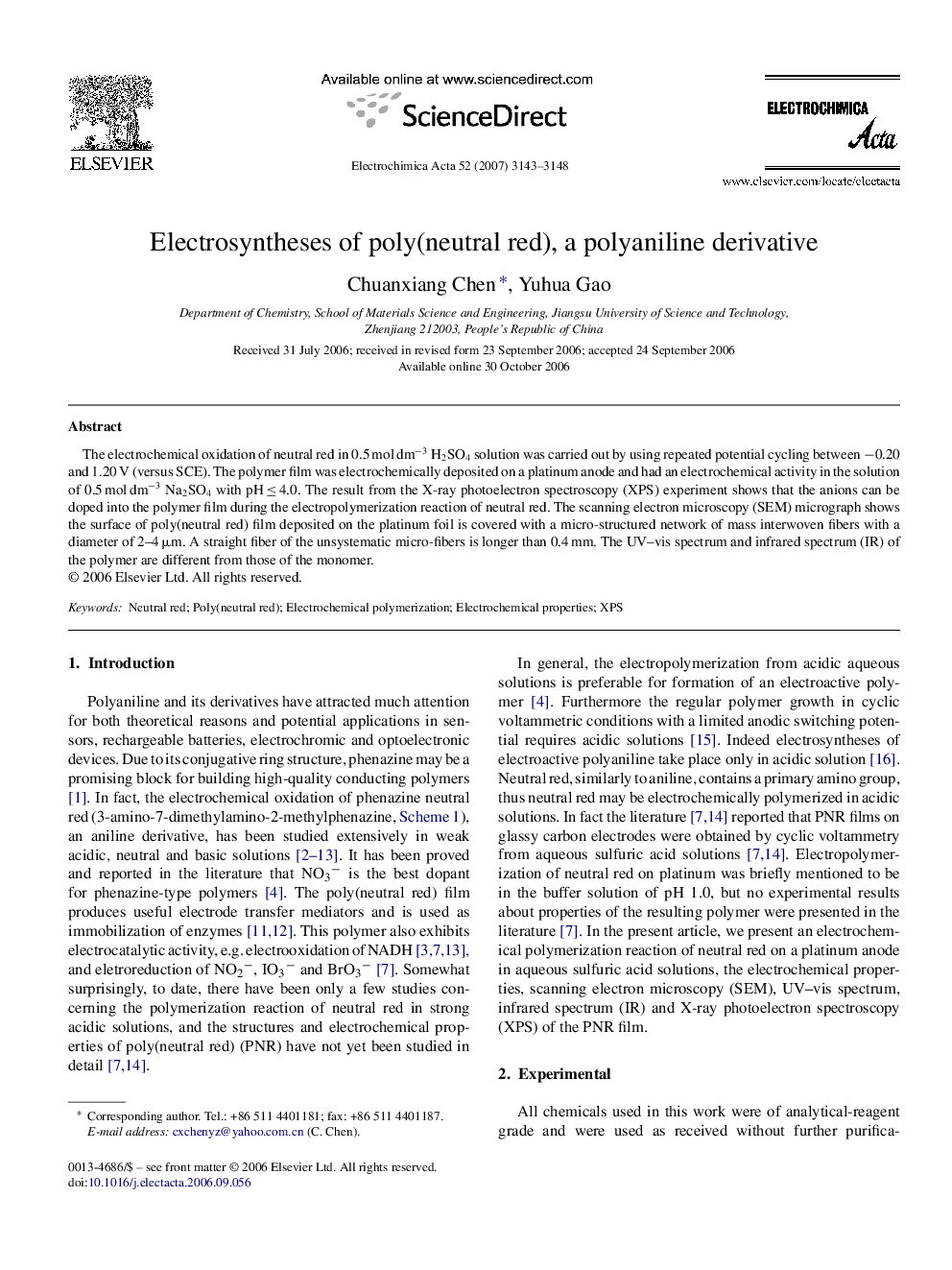| Article ID | Journal | Published Year | Pages | File Type |
|---|---|---|---|---|
| 194088 | Electrochimica Acta | 2007 | 6 Pages |
The electrochemical oxidation of neutral red in 0.5 mol dm−3 H2SO4 solution was carried out by using repeated potential cycling between −0.20 and 1.20 V (versus SCE). The polymer film was electrochemically deposited on a platinum anode and had an electrochemical activity in the solution of 0.5 mol dm−3 Na2SO4 with pH ≤ 4.0. The result from the X-ray photoelectron spectroscopy (XPS) experiment shows that the anions can be doped into the polymer film during the electropolymerization reaction of neutral red. The scanning electron microscopy (SEM) micrograph shows the surface of poly(neutral red) film deposited on the platinum foil is covered with a micro-structured network of mass interwoven fibers with a diameter of 2–4 μm. A straight fiber of the unsystematic micro-fibers is longer than 0.4 mm. The UV–vis spectrum and infrared spectrum (IR) of the polymer are different from those of the monomer.
